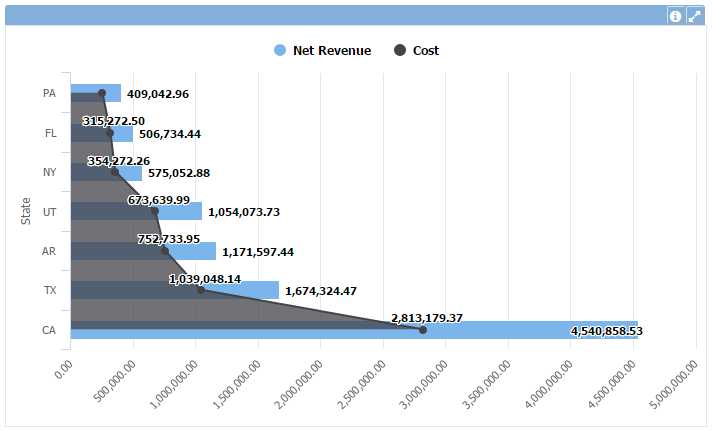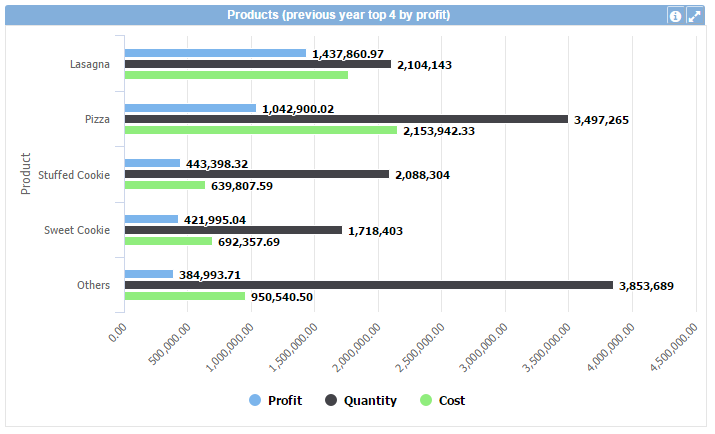Difference between revisions of "Bar Chart/en"
(Importing a new version from external source) |
(Importing a new version from external source) |
||
| Line 4: | Line 4: | ||
A Bar Chart object that represents data as a series of horizontal columns whose height is determined by the values in the data. | A Bar Chart object that represents data as a series of horizontal columns whose height is determined by the values in the data. | ||
| − | The Bar Chart object needs one [[Date]] or [[Text]] column that will be used to group data and supports [[Value|values]] columns that will be | + | The Bar Chart object needs one [[Date]] or [[Text]] column that will be used to group data and supports [[Value|values]] columns that will be show as the bars in the chart. |
For other chart options, see [[Objects]]. It is also possible to create combined charts by changing the [[Series Type]] property of the [[Value]] columns. | For other chart options, see [[Objects]]. It is also possible to create combined charts by changing the [[Series Type]] property of the [[Value]] columns. | ||
Revision as of 17:35, 21 September 2017
A Bar Chart object that represents data as a series of horizontal columns whose height is determined by the values in the data.
The Bar Chart object needs one Date or Text column that will be used to group data and supports values columns that will be show as the bars in the chart.
For other chart options, see Objects. It is also possible to create combined charts by changing the Series Type property of the Value columns.
Examples
In the example above, the chart displays the Net Revenue in bars series and the Cost in area series by State.
In the example above, the chart displays values for the top 4 (Row limit) products from the previous year (Object Filters).
See below all available properties for this object:
- Data Properties:
- Category Axis Properties:
- Values Axis Properties:
- Series Properties:
- Legend Properties:
- Title Bar Properties:
- Layout Properties:

